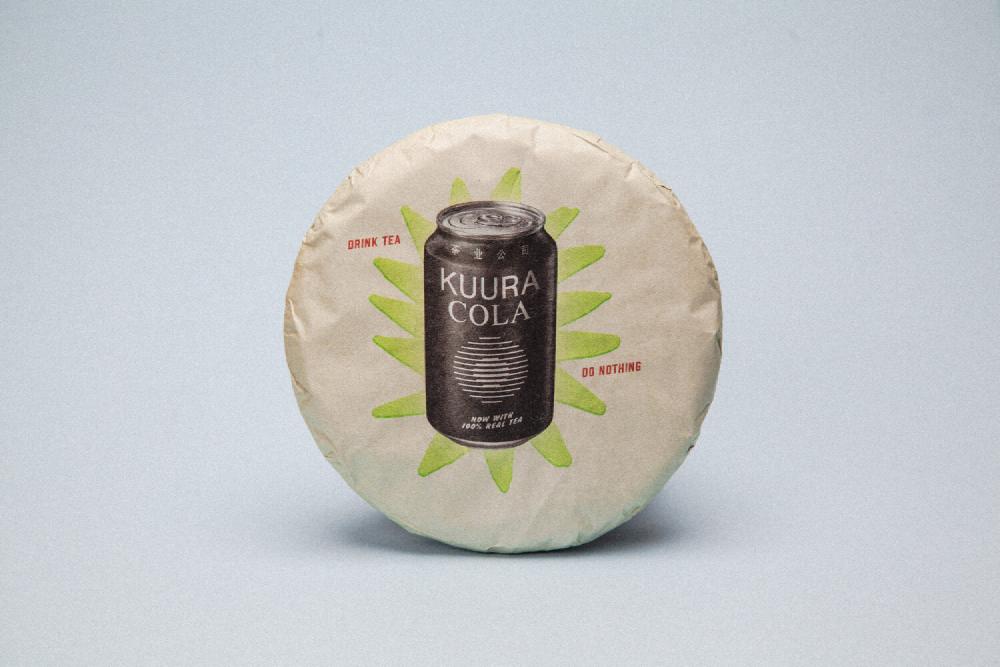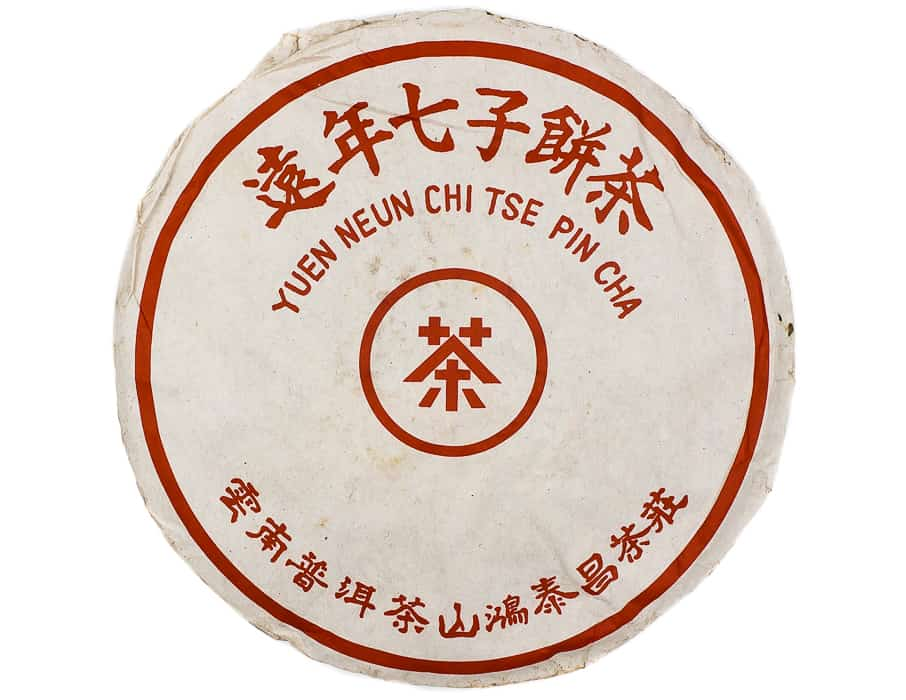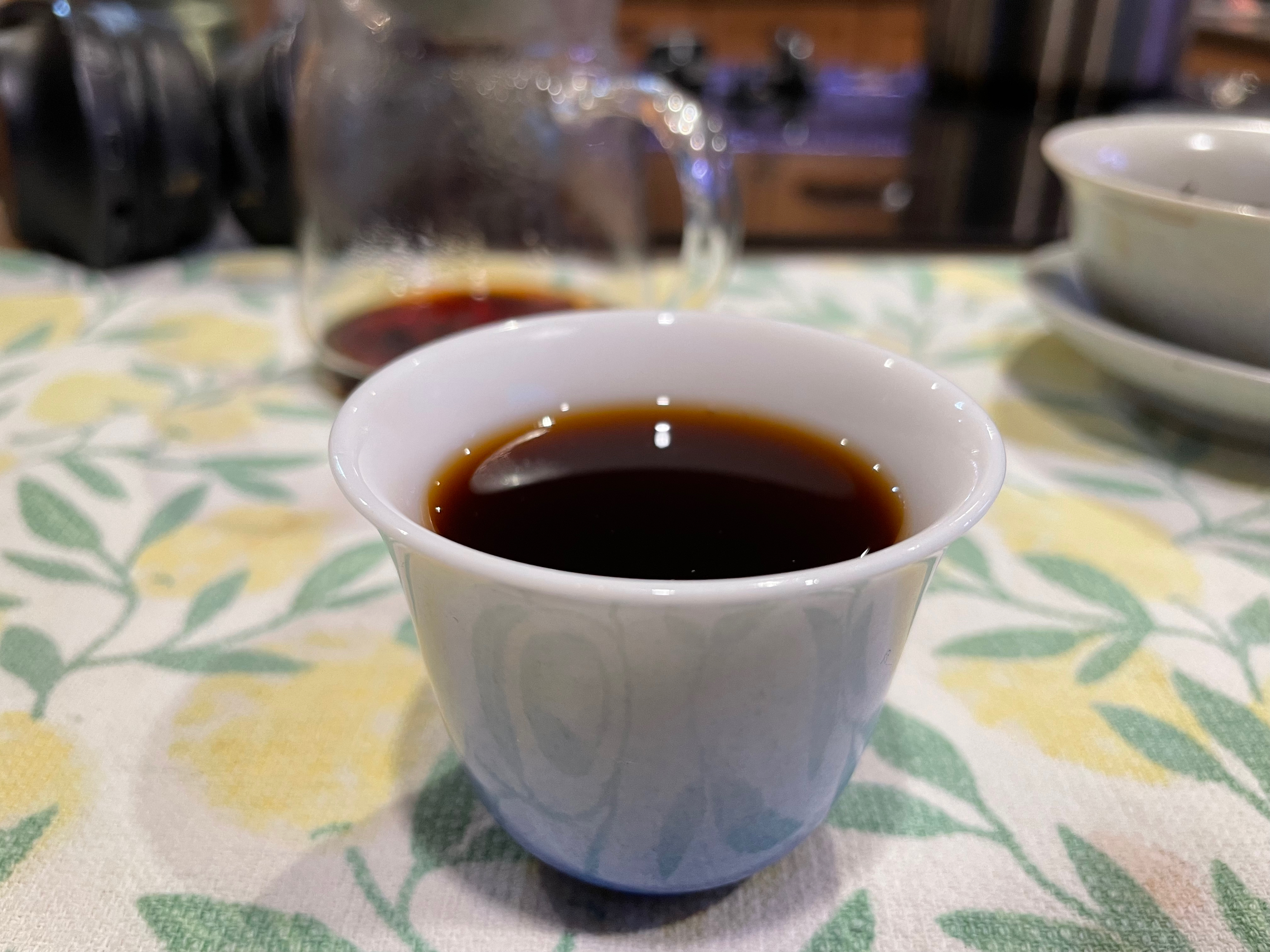Kuura Cola

April 8, 2024
A Brief Introduction
So, as I mentioned in a recent post, I’m fully infected by the puer tea obsession. If you’re unfamiliar, puer is a type of fermented tea produced in the Yunnan region of China. It comes in two major varieties, raw/sheng puer and ripe/shou puer. The former is allowed to age naturally (and aging is a thing for puer) while the latter goes through a process that was invented to artificially “age” the tea “quicker.” Really, though, this process created a whole new variant that shares little resemblance to a raw puer tea that has been aged. Whether raw or ripe, puer is typically pressed into cakes for storage and distribution.

A tea cake.
I am not an expert on puer tea, by any means. I’ve been slowly trying lots of teas and seeing what I like, but once you get into puer you feel almost immediately how deep the rabbit hole is, and the fact that it is a cross-cultural rabbit hole is especially humbling. What I’d like to start doing, though, is posting some of my thoughts as I work through various teas. So, consider this the first post in what I hope will be a series of tea-oriented journal entries. My goal for these entries will be more to learn (through writing) than to teach, but hopefully folks will find something interesting in them.
Kuura Cola
Onto the tea at hand. I bought a few cakes of Kuura Cola without sampling them, as the tea gets recommended quite a bit online as a “daily drinker.” I rarely drink coffee these days, and ripe puer has become its substitute. Ripe puer is usually forgiving to brew “grandpa style” in my thermos and to take with me all day. Oddly, I’ve found Kuura Cola to break that typical mold. It really benefits from gongfu-style brewing, and I’ve had less success with grandpa style.

Cola in my cup.
Cola is a pretty standard ripe puer tea, which doesn’t mean it isn’t good. It’s got very sweet notes and very little ripe puer “funk.” Vanilla is the most dominant flavor to my pallate, and the soup is very thick and dark. KuuraCorp’s website claims that drinkers may pick up sweet wood, as well, but I get less of that. This may have something to do with White2Tea’s Lumberslut being among my favorite teas, which is… not subtle in terms of woody flavor profiles. Because of it’s pleasant sweetness, I could see Cola being a good introduction to puer. Moreover, I think this would be a good tea if someone wanted to wean themselves off of coffee, as this is a really hearty and full-bodied puer.
According to KuuraCorp, Cola is a blend of puer leaves, fermented in 2018/2019 and pressed in 2020. There isn’t too much else in the way of information, other than that Kuura typically sources from Xishuangbanna. This lack of information is actually convenient for me, a new enthusiast for a hobby that is notorious for misinformation and spurious claims to origin. The lack of specificity (and the very reasonable price) makes things simple and easy.
Things were a bit less simple in learning how I liked to brew this tea, though. KuuraCorp mentions giving the cake time to settle, and I strongly agree. Truthfully, I hated the tea when I first sampled it. It initially tasted very mineral-ish, which I don’t dislike out of pocket but which was overpowering to the point of almost tasting salty. Once I gave the tea a few weeks to rest, though, the minerality faded and the sweeter notes came forward.
The other surprising thing I learned, mentioned briefly above, is that this tea really shines when brewed gongfu, which is a practice of using a high ratio of leaves to water and brewing leaves several times using relatively short steeps. Many folks online are very… evangelist about gongfu brewing, which makes sense because it is a wonderful method to brew tea. That said, I am persuaded by those who note that gongfu brewing is:
- A relatively new phenomenon.
- Not the way most people in the world drink tea.
While I certainly love brewing gongfu style and nearly always gongfu raw and more expensive ripe puer, I just find myself drinking grandpa style more often. This isn’t only because of convenience, but also because some teas just teas taste better to me when brewed grandpa style. Kuura Cola is not one of those teas. I love it when brewed gongfu, but so far the grandpa style brews end up reactivating the minerality that I initially found off-putting.
All that said, I’m enjoying Kuura Cola. I’ve got a few sessions left of the first cake and then am planning to let the second one sit for a while and see what I think then.